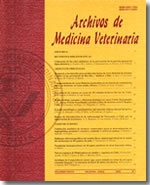The milking routine and its role in mastitis control programmes
Main Article Content
Abstract
Economic losses due to mastitis in dairy herds, in particular subclinical mastitis, because of less milk yield and poor milk quality, make its control a goal to be achieved in every dairy herd.
The risk of intramammary infection and transmission of mastitis pathogens, mainly contagious organisms, is higher during milking. Consequently, a good milking routine and udder preparation greatly reduces the risk of infection, being specially important the hygiene and the milking machine inducing factors.
A good milking routine involves a number of procedures which must be properly and carefully practised at every single milking. These procedures can be summarised as follows: provide cows with a clean environment, free of stress; check foremilk using a strip-cup to detect clinical mastitis and stimulate milk let-down; wash and thoroughly dry the surface of the teats with an individual disposable paper towel to reduce the spread of mastitis pathogens and to avoid milk contamination during milking; attach the teat cups within 1 minute after initiating udder preparation to get the maximum effect of oxytocin; check and adjust the milking units, as needed, to avoid air admission and prevent liner slip; shut off the vacuum before detaching the milking units to prevent impact; disinfect teats after milking with a safe and effective teat dip to destroy mastitis pathogens remaining on the teat.
In some herds, other optional measures can be added to this routine, mainly teat disinfection before milking (predipping) and disinfection of clusters between cows during milking.

